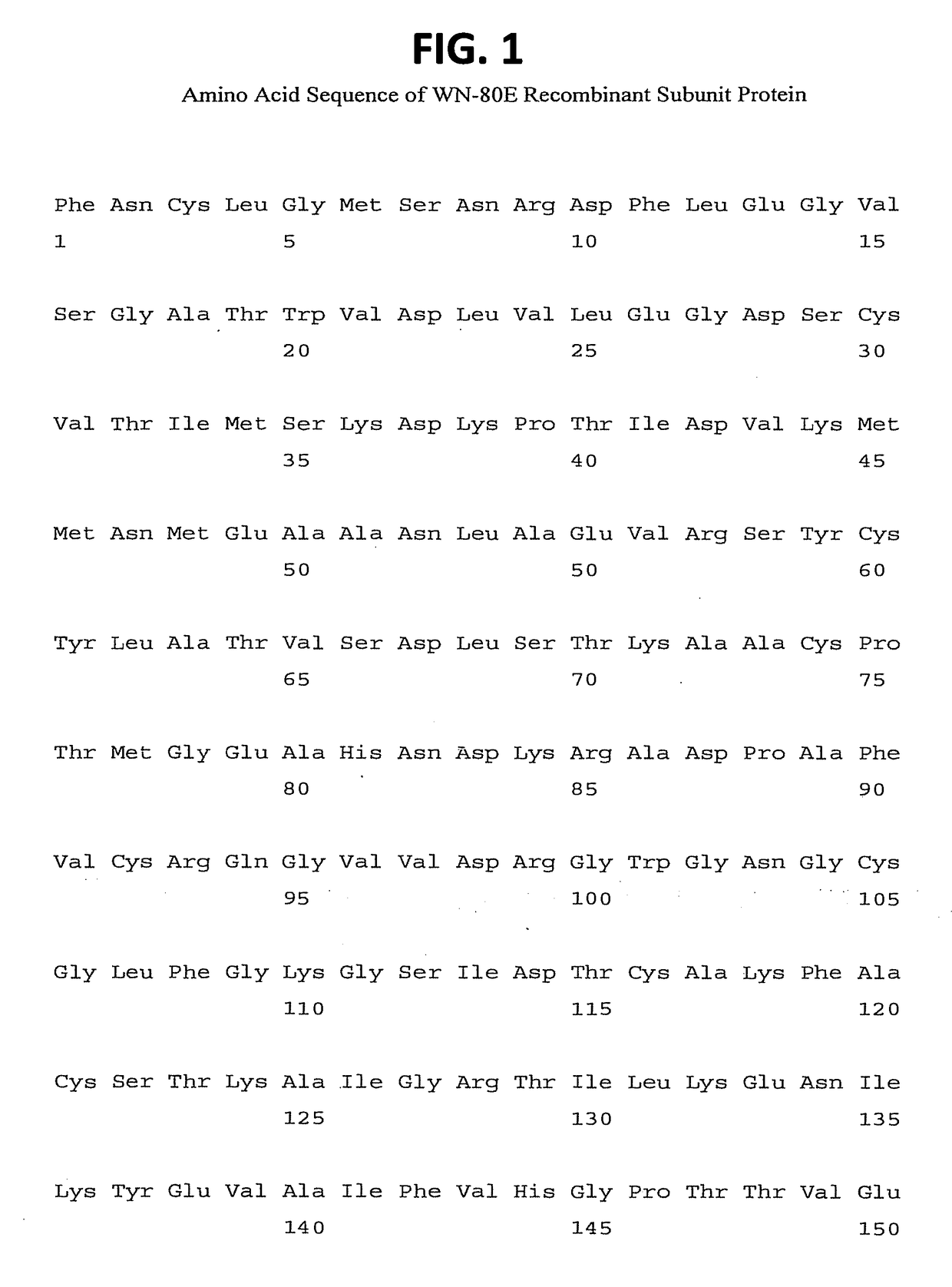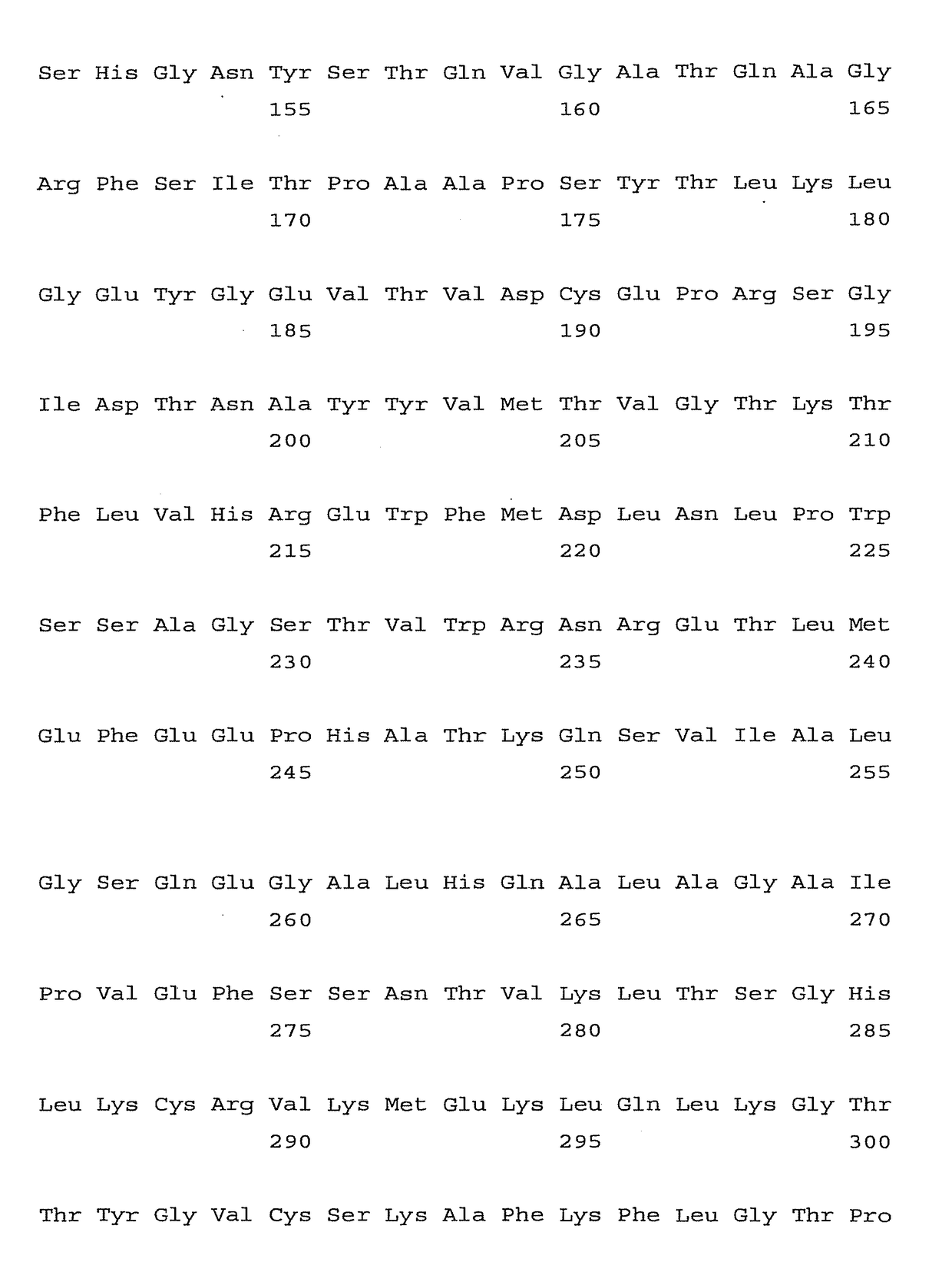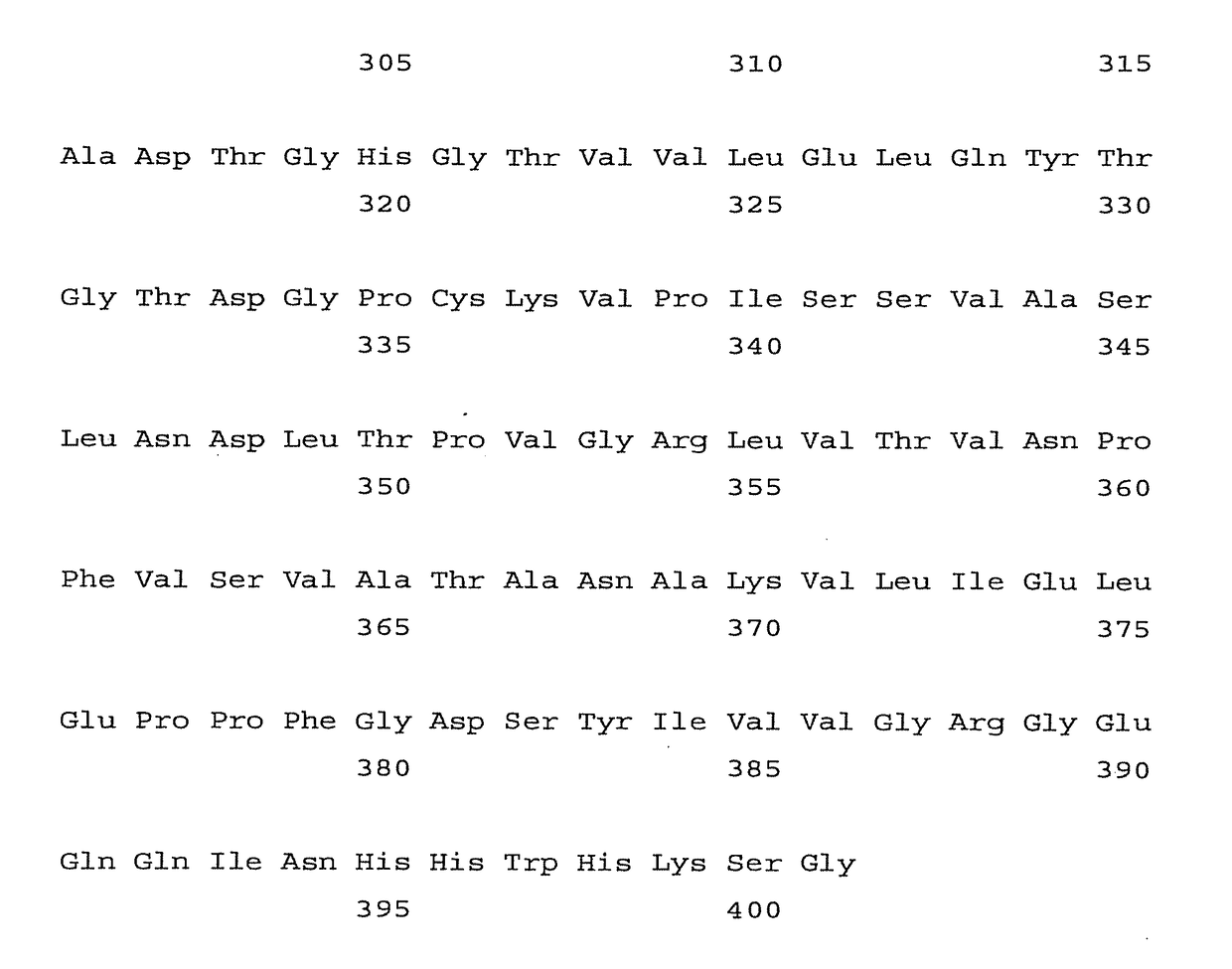Recombinant subunit west nile virus vaccine for protection of human subjects
a subunit of the virus and recombinant subunit technology, applied in the field of vaccines, can solve the problems of slow healing of neurological damage caused by the virus, requiring significantly more time to recover from viral infection, and permanent neurological disabilities, and achieves acceptable safety profiles
- Summary
- Abstract
- Description
- Claims
- Application Information
AI Technical Summary
Benefits of technology
Problems solved by technology
Method used
Image
Examples
example 1
Expression and Purification of West Nile 80E Protein in the Drosophila S2 system
[0051]The expression plasmid pMttbns (derived from pMttPA) contains the following elements: Drosophila melanogaster metallothionein promoter, the human tissue plasminogen activator secretion leader (tPAL) and the SV40 early polyadenylation signal. At Hawaii Biotech, a 14 base pair BamHI fragment was excised from the pMttbns vector to yield pMttΔXho that contains a unique XhoI site in addition to an existing unique BglII site. This expression vector promotes the secretion of expressed proteins into the culture medium. West Nile sequences were introduced into the pMttΔXho vector using these unique BglII and XhoI sites. For the expression of a carboxy-truncated West Nile envelope protein, a synthetic gene encoding the entire prM protein and amino acids 1-401 of the E protein from West Nile virus was synthesized (Midland Certified Reagent Co., Midland, Tex.). The nucleotide sequence of the synthetic gene fol...
example 2
Production of WN-80E Under cGMP to Support Clinical Testing
[0056]A Master Cell Bank (MCB) was prepared from S2 cells transformed with the pMttprMWN80E plasmid under cGMP conditions. The cGMP manufacturing process involves expansion of the S2 MCB cell line to a stirred tank bioreactor and then harvesting the culture medium containing the secreted protein. The cells are separated from the culture medium by filtration utilizing depth filters. The WN-80E is then purified from the resultant clarified supernatant by immunoaffinity chromatography using the 4G2 monoclonal antibody. The immunoaffinity purification product is subsequently taken through a low pH viral inactivation step and a viral filtration step using PVDF membranes with pore sizes capable of removing 20 nm particles. The final processing of the WN-80E protein involves buffer-exchange and concentration by ultrafiltration followed by a final filtration through a 0.2 μm filter.
[0057]The manufacture of a representative lot of WN...
example 3
Formulation of the HBV-002 Vaccine for Use in Clinical Studies
[0059]The purified WN-80E biologic substance described in Example 2 was thawed and transferred into a Class 100 laminar flow area. The WN-80E was added to a sterile container and sterile Dulbecco's Phosphate Buffered Saline (DPBS) was added in to achieve a final protein target concentration of 0.20 mg / mL. The diluted WN-80E solution was sterile filtered. Alhydrogel '85 was volumetrically added to a sterile container containing DPBS to a final Alhydrogel concentration of 14.0 mg / mL. The WN-80E protein solution was then transferred quantitatively into the Alhydrogel suspension and mixed gently overnight at 2-8° C.
[0060]Following the overnight adsorption the quantity of WN-80E protein which was not adsorbed was determined. A minimum of 75% adsorption was required to move forward to fill of the HBV-002 vaccine. The HBV-002 vaccine was dispensed into prepared sterile vials. The filled vials were stoppered, sealed, and crimped....
PUM
| Property | Measurement | Unit |
|---|---|---|
| median recovery time | aaaaa | aaaaa |
| median recovery time | aaaaa | aaaaa |
| pH | aaaaa | aaaaa |
Abstract
Description
Claims
Application Information
 Login to View More
Login to View More - R&D
- Intellectual Property
- Life Sciences
- Materials
- Tech Scout
- Unparalleled Data Quality
- Higher Quality Content
- 60% Fewer Hallucinations
Browse by: Latest US Patents, China's latest patents, Technical Efficacy Thesaurus, Application Domain, Technology Topic, Popular Technical Reports.
© 2025 PatSnap. All rights reserved.Legal|Privacy policy|Modern Slavery Act Transparency Statement|Sitemap|About US| Contact US: help@patsnap.com



